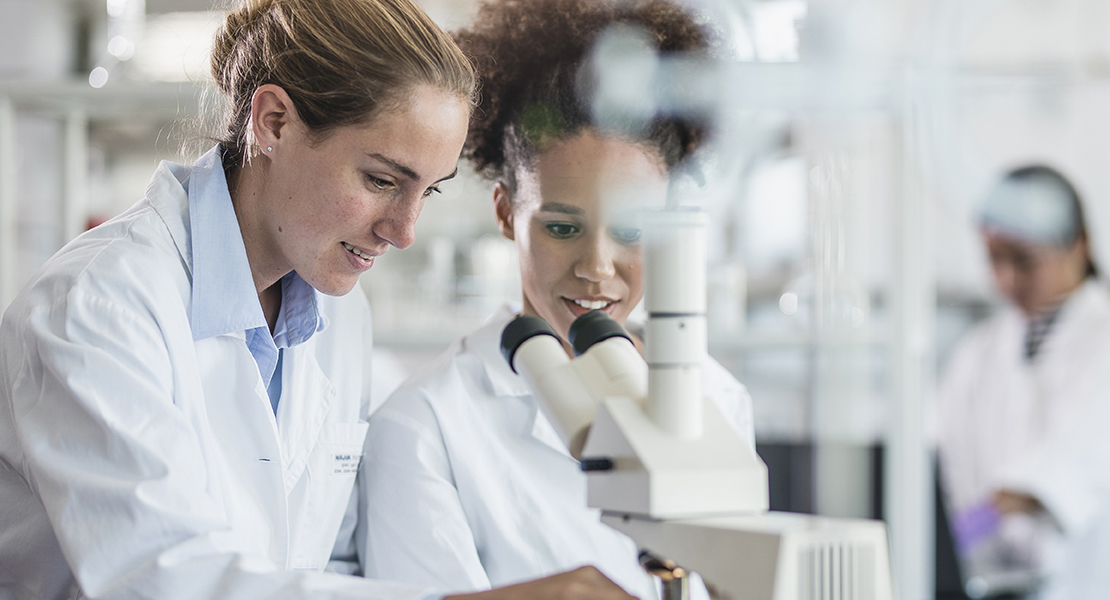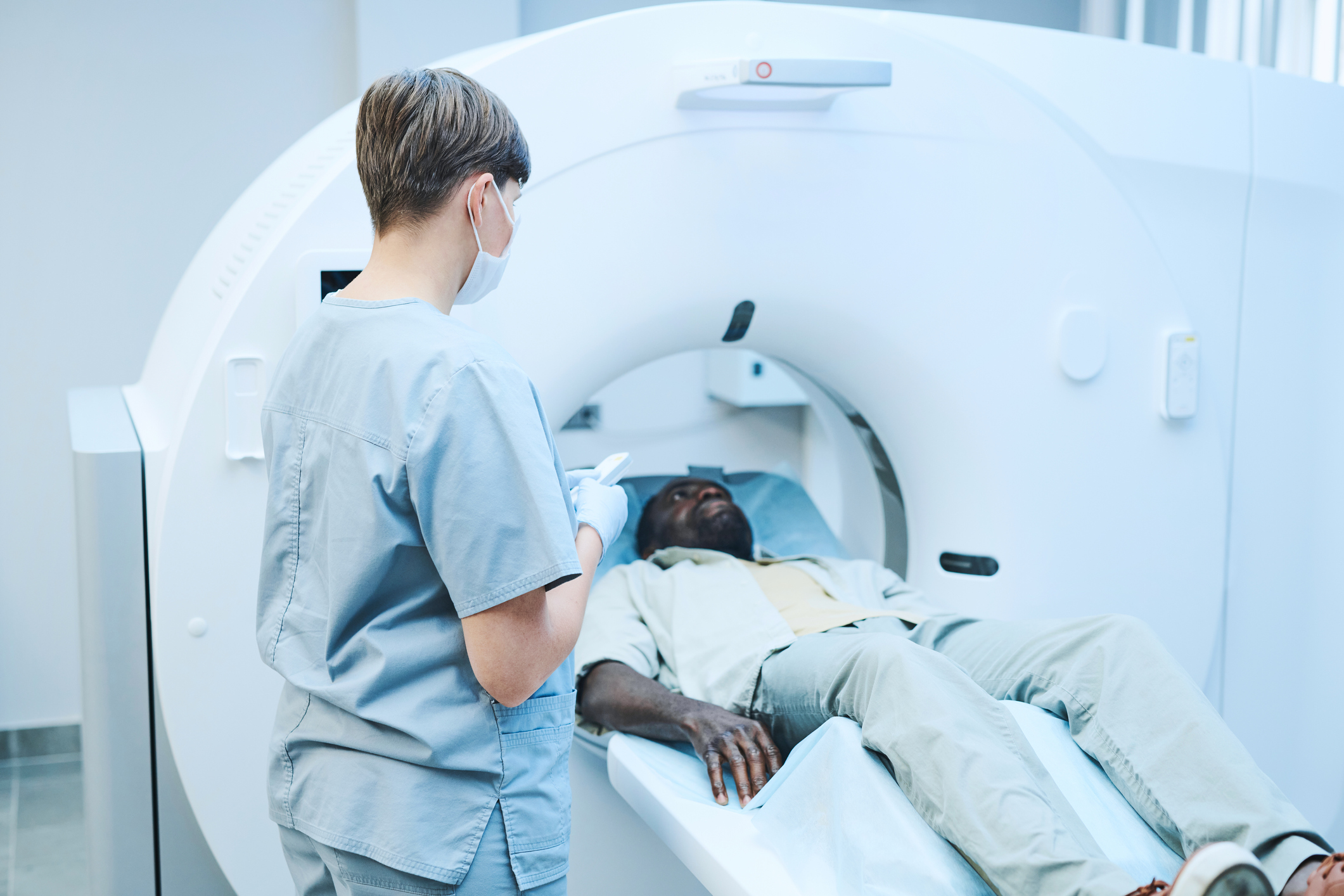UK researchers played a major role in creating the vaccines and treatment that protected us from the Covid-19 pandemic. But we've been making advances in the treatment and care of a variety of conditions for decades.
Many of the drugs we rely on, from penicillin to paracetamol, were created thanks to the researchers, healthcare professionals, and volunteers that took part in research.
Breakthroughs can come from all sorts of research - from extensive clinical trials to simple patient surveys. And are often years in the making. Each bit of new information brings us one step closer to new treatments and better care.
Here are six important breakthroughs in the past 12 months.
1. World-first treatment for 'incurable' T-cell leukaemia
Researchers used a new gene treatment to clear a teenage girl’s incurable cancer cells from her body.
Key facts
- Thirteen-year-old Alyssa, from Leicester, was the first patient in the world to receive genetically modified immune cells, called CAR T-cells. She was first diagnosed with acute leukaemia in 2021. Despite receiving all current conventional treatments for her cancer, the disease returned.
- CAR T-cell treatment usually involves genetically modifying the body’s naturally occurring T-cells to find and fight cancer. But because Alyssa’s cancer was caused by rogue T-cells, this technique wouldn’t work and had to be modified.
- Alyssa's T-cells often ended up attacking each other before they could be used for treatment. So the researchers edited the DNA code in them. These new, edited T-cells were then able to clear the cancer cells from Alyssa’s body.
- Finally, she then received a bone marrow transplant to restore her immune system.
Professor Waseem Qasim from the NIHR Great Ormond Street Hospital Biomedical Research Centre said: “It’s our most sophisticated cell engineering so far and paves the way for other new treatments and ultimately better futures for sick children."
2. New scan helps detect a common cause of high blood pressure
A simple 10-minute scan could enable the detection and cure of a common cause of high blood pressure.
Key facts
- Researchers developed a new scan to detect growths of abnormal tissue - called nodules - in the adrenal glands. These glands produce hormones that help regulate your blood pressure.
- Around 1 in 20 people with high blood pressure have these tiny nodules. By removing them, doctors are able to cure high blood pressure in some patients.
- The study involved 128 patients with high blood pressure, who also had high levels of the hormone aldosterone. This hormone causes the body to retain salt, driving up blood pressure.
- The new scan uses short-acting radioactive dye to detect aldosterone-producing nodules for removal. Currently, the only way to find these nodules is with an invasive catheter test. These are only available in a handful of hospitals and can be uncomfortable and inaccurate.
- When combined with a urine test, researchers were also able to identify which patients could stop their blood pressure medication once they had the nodule removed.
Professor Morris Brown, co-senior author of the study and Professor of Endocrine Hypertension at Queen Mary University of London, said: “These aldosterone-producing nodules are very small and easily overlooked on a regular CT scan. When they glow for a few minutes after our injection, they are revealed as the obvious cause of hypertension, which can often then be cured. Until now, 99% are never diagnosed because of the difficulty and unavailability of tests. Hopefully this is about to change.”

3. Smart stethoscope uses artificial intelligence to screen for heart failure
Artificial intelligence could be used with high-tech stethoscopes to more easily identify symptoms of heart failure.
Key facts
- Heart failure occurs when the muscles in the heart are too weak to pump blood around the body. This is a serious medical condition which may require a specialist diagnosis.
- In a study of more than 1000 people, researchers used a stethoscope equipped with sensors to measure the heart’s electrical activity.
- They also incorporated artificial intelligence to help them analyse the electrocardiogram (ECG) reading.
- Using this method, the researchers identified people with heart failure 9 times out of 10.
- People with heart failure often find out after being rushed to hospital. This tool could help GPs refer patients who are at risk more quickly.
Nick Mills, British Heart Foundation Professor of Cardiology at the University of Edinburgh said: “Heart failure is a debilitating condition that requires immediate medical attention, but it isn’t always easily detected at a GP appointment. There’s currently no cure for heart failure, and so quick detection and treatment is key. This AI tool could fast-track people to get an earlier diagnosis, giving them access to life saving treatments and support much sooner.”
4. Ground breaking clinical trial gives lab-grown red blood cells to people for the first time
Two patients received a transfusion of lab-grown red blood cells, as part of a world-first clinical trial.
Key facts
- Stem cells, taken from healthy volunteers, were grown into red blood cells in a lab. Usually, donated blood contains cells of varying ages. Since the lab-grown ones are fresh, they could perform better and reduce the risk of complications.
- Healthy volunteers received two mini transfusions. The first contained standard donated red cells and the second had lab-grown red cells.
- The manufactured cells had a chemical tracer so that researchers could determine how long they last. If they do last longer in the body, patients who need blood may not need transfusions as often.
- The findings could also have huge implications for people with rare blood disorders, such as sickle cell anaemia. It can be difficult to find enough well-matched donated blood for these patients.

5. Methenamine is as good as antibiotics at preventing urinary tract infections
A study showed methenamine, an antiseptic that stops the growth of bacteria, could be as effective as antibiotics at preventing urinary tract infections (UTIs).
Key facts
- 1 in 2 women will get a UTI - a bacterial infection of the organs involved in peeing - over their lifetime. Of those women, 1 in 4 will go on to get them frequently.
- Recurrent UTIs are currently treated with small daily doses of antibiotics. But over time the bacteria that cause these infections can become resistant, making them much harder to treat.
- More than 200 women who had frequent UTIs took part in a study to test an alternative treatment. One group took traditional antibiotics while the other took methenamine.
- After 12 months, the researchers found methenamine was as effective as antibiotics in reducing UTIs. But the women in the methenamine group needed more short-course antibiotics in the following 6 months.
- Methenamine could be a potential alternative treatment, reducing the use of antibiotics. But more research is needed to explore its long-term safety.
6. Simple tool identifies the people with diabetes most likely to develop foot ulcers
A new tool can more accurately predict the risk of foot ulcers in people with diabetes. This could help to ensure that preventative treatments are offered to those most at risk.
Key facts
- Foot ulcers – or open wounds – are a common complication of diabetes. If not treated properly they can lead to amputation.
- While ulcers can be prevented, it is hard to identify who is most at risk.
- A new tool can now make these predictions using only three key pieces of information: insensitive nerves, a history of previous ulcers, and the strength of the patient’s pulse in their foot.
- In a study of 3000 patients, the tool identified people who would develop ulcers, and people who would not, 83% of the time.
- This new tool could help simplify foot care for people with diabetes and save the NHS up to £250 million each year.
Amy Harwood, one of the researchers from Coventry University said: “A simple calculation of risk factors determines whether someone is likely to have a foot ulcer. Finding the people at greatest risk will help them access the right treatments. Overall, this could represent a huge cost saving to the NHS.”
How you can get involved with research
Sign up to Be Part of Research to be contacted about a range of health and care research. Or check out our full list of studies to see if one is right for you.
And if taking part in a study doesn’t feel right at the moment there are other ways to get involved in research.
Find out more
Explore NIHR alerts which are plain English summaries of the latest research findings.








